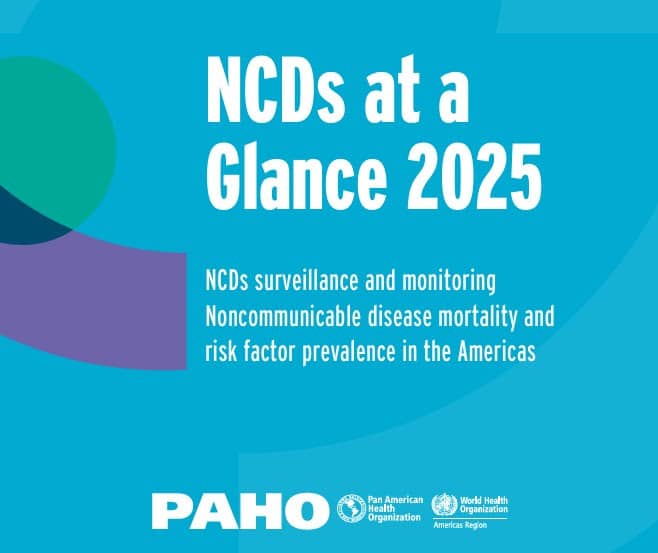Deaths from noncommunicable diseases (NCDs), such as heart disease, cancer, and diabetes, have surged by 43% in the Americas since 2000, reaching 6 million in 2021, according to the Pan American Health Organization’s (PAHO) NCDs at a Glance 2025 report, released today. Noncommunicable diseases are the main cause of death, accounting for 65% of all deaths in the region, with nearly 40% occurring before age 70. While aging and population growth contribute to this burden, the increase is largely driven by modifiable risk factors such as tobacco use, unhealthy diet, physical inactivity, and harmful alcohol consumption. According to the report, cardiovascular diseases led with 2.16 million deaths, followed by cancer (1.37 million), diabetes (over 420,000), and chronic respiratory conditions (more than 416,000). Suicide, the fourth leading cause of death among youth aged 15–29, claimed 100,760 lives.
“The surge in NCD deaths is an urgent wake-up call,” stated Dr. Jarbas Barbosa, PAHO Director. “Too many people are dying prematurely from diseases that are largely preventable and treatable. With early detection, timely diagnosis, access to care, and strong policies, we can save lives. This report gives countries the tools they need to act.”
Risk factors rising fast In 2022, obesity affected 33.8% of adults—a 28% increase since 2010—while physical inactivity rose to 35.6%. Diabetes prevalence reached 13.1%, while 43 million people over 30 are unable to access needed care. Hypertension affects more than a third of adults, yet only 36.4% are controlled.
The report also addresses environmental and mental health challenges. Air pollution increases the risk of cardiovascular and respiratory conditions, and suicide rates have risen by 17.4% since 2000, with three times as many men affected as women.
Some progress, but the region is off track Despite increasing trends in total deaths, age-standardized mortality rates show some progress since 2000:
• NCD mortality rates declined by 16.2%.
• Cardiovascular and chronic respiratory disease mortality rates dropped by nearly 30%.
• Cancer mortality rates fell by 24.6%.
There has also been progress on some modifiable risk factors since 2000:
• Tobacco use declined by 22.1%.
• Diabetes treatment coverage rose from 46.6% to 57.7%.
However, the Region of the Americas is not on track to meet the global goal of a 25% reduction in premature NCD mortality by 2025. From 2010 to 2021, premature mortality decreased by just 8%. Only five countries—Antigua and Barbuda, Argentina, Barbados, Chile, and Grenada—are on track. However, eleven more member states could meet this goal with accelerated efforts.
A roadmap for accelerating NCD progress To reduce the burden of NCDs, countries should scale up prevention policies—such as tobacco and alcohol control, front-of-package nutrition labeling, and physical activity promotion—and strengthen primary care for early detection and management of hypertension, diabetes, and cancers. Mental health and suicide prevention should also be integrated at the first level of care.
Initiatives such as PAHO’s HEARTS program, now active in 33 countries and reaching 5.7 million people for hypertension treatment, and a key pillar of the Better Care for NCDs initiative, is helping countries strengthen primary care systems and implement national action plans.
The NCDs at a Glance 2025—PAHO’s second edition—can help shape policy ahead of the Fourth High-level Meeting of the UN General Assembly on the prevention and control of NCDs and the promotion of mental health and wellbeing in September 2025, when countries are expected to adopt a new political declaration. This offers a key opportunity to accelerate progress by addressing inequities, reshaping health systems, and tackling the root causes of NCDs.


